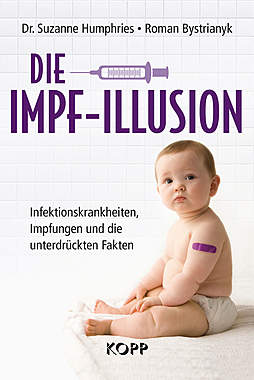- Dubya's Dilemma By ALAN ABELSON - CRASH_GURU, 04.12.2005, 13:49
Dubya's Dilemma By ALAN ABELSON
-->UP AND DOWN WALL STREET
By ALAN ABELSON
Dubya's Dilemma
YOUR HEART COULDN'T help but leap up last week when you heard the music and saw the flag as the president strode to the lectern to give his speech at the Naval Academy. Toss in that backdrop of shiny-faced midshipmen cheering their commander-in-chief and, man, it was strictly goose-pimple time.
The theme of Mr. Bush's address -- that we had to stay the course in Iraq until we won the war -- was somewhat less exciting than the stirring ambiance in which it was delivered. Mostly, we guess, because the essential message was so widely advertised in advance and, in any case, the refrain was sufficiently familiar to obviate a lot of the suspense that usually attends an important presidential pronouncement.
Nonetheless, Mr. Bush, who, of late, notably in some of his less scripted moments, seemed a tad listless when on the platform, was back in his old forceful form at Annapolis. Nothing like a highly enthusiastic audience, especially one in uniform, to energize a speaker.
Which prompts the worry that the president may find himself with a problem. For he has demonstrated a clear preference, when seeking to rally his fellow citizens to support the war, for making his pitch at military installations. Security is no doubt one reason; political stagecraft another. But he also likely is influenced by the certainty of a hearty reception and, equally important, the absence of those pesky protestors who are prone to crop up wherever they're not wanted.
Trouble is, paradoxically, because of the pressing need to cut spending across the board, the number of military bases is being deliberately shrunk. No fewer than 22 major facilities are slated to become history and another 33 are to undergo"major realignments," actions that Mr. Bush has ordained with the necessary approval. It's only a matter of time, we fear, before the president runs out of those congenial venues in which to give his speeches.
--------------------------------------------------------------------------------
DOW JONES REPRINTS
--------------------------------------------------------------------------------
This copy is for your personal, non-commercial use only. To order presentation-ready copies for distribution to your colleagues, clients or customers, use the Order Reprints tool at the bottom of any article or visit: www.djreprints.com. • See a sample reprint in PDF format • Order a reprint of this article now.
--------------------------------------------------------------------------------
We suppose he could always do a repeat performance at the bases that escape shuttering, but that might lend an unwelcome sense of déjà vu to the proceedings. And the only other places that seem to meet the requisite considerations of security and friendly audience are prisons.
That prisons per se are unquestionably well-guarded is evidenced by the telling factor that nobody in full possession of his senses ever tries to force his way into one. And while it's true that the inmates may be murderers, thieves, swindlers or drug dealers -- in short, folks you probably wouldn't want to have over for dinner -- with rare exceptions, and those could be kept in solitary confinement for so special an occasion, their patriotism is unimpeachable.
On its face, of course, the notion is ludicrous. There are practical objections as well. Many prisons are bursting at the seams, their populations swollen by the influx of ex-CEOs. Even worse, the numbers of inmates nationwide are further mounting inexorably with the addition of errant politicians -- congressmen especially, but mayors and judges and other former public servants as well. Which means that you're getting a lower class of criminal these days.
On reflection and after exhaustive study, aided by our crack researcher, Pauline Yuelys, we happily have turned up a way out for the president. As mandated, the base closures must be completed by 2011. Even by our fuzzy math, that suggests the deed needn't be done until nearly three years after Mr. Bush leaves office. So all he has to do is order his underlings in charge of the operation to backload it -- in other words, make sure the closings do not start until Jan. 21, 2009.
That would enable the president to continue to do his thing at military bases before his favorite audiences. What's more, a very important ancillary benefit would be a rebound in his poll ratings, as the locals who are likely to feel the impact of the closures on their regions' economies express their gratitude for the reprieve by giving the president a thumbs-up.
If by chance sometime in the next three years we've ended our engagement in Iraq, Mr. Bush's poll ratings are apt to rise anyway, and he can revive the original schedule for shutting down the bases. It's a win-win solution to the president's looming dilemma.
BEDEVILED AS HE IS by critics of his policies, including some dastardly turncoats in his own party, and the usual turmoil and disenchantments that invariably beset presidents in their second terms, Mr. Bush can draw at least a dollop of comfort from the good news pouring in from the economic front. The most conspicuous, but by no means the only, such glad tidings were the stellar 4.3% annual growth in GDP in the third quarter, solid payroll numbers for November and a surging stock market.
That would almost be enough for even the most curmudgeonly observer to admit, however grumpily, that this expansion, so lopsided and often straggly, is at long last on solid footing. Alas, there are some blemishes on this bright picture and not entirely minor ones. For openers, oil and gas prices, blessedly quiescent for a spell, have suddenly begun to rise again, buoyed by a foretaste of winter. Moreover, gold shot up to $505 Friday, the highest price in 23 years, and what's good for gold is often an evil omen for economic tranquility.
And the savings rate, in the September quarter, hit an incredible minus (yes, you read right, minus) 1.5%. We can't say for sure, but we suspect you'd have to go back to the 1930s to find a comparably emaciated rate of savings.
By this time, it's no secret that behind the profound indisposition to save is the remarkable eagerness by ravenous consumers to use their houses as cash cows. David Rosenberg, Merrill Lynch's crack economist, notes that equity cashouts so far this year have weighed in at a tidy $160 billion. Ask not, then, where the dough is coming from to fuel the great spending boom -- a mighty chunk of it is coming not out of people's pockets (which aren't especially full) or paychecks (which are pretty darn skimpy), but their houses. Those marvelous castles, whose value appreciates by quantum leaps every year, a stimulating trend that, of course, is destined to continue ad infinitum.
Which leads us to the accompanying chart, which we're also indebted to David for. As the subheading explains, that single line rising toward the heavens depicts the share of household real-estate assets as a percentage of gross domestic product. It's a graphic (in every sense of the word) description of the fantastic rise of the housing bubble. And it's eerily reminiscent of the charts that frequently enlivened this space at the top of the bull market in the late 'Nineties portraying the enormity of the equity bubble. As David warns,"Caveat emptor whenever anything approaches 150% of GDP."
There are, as we may have pointed out before in discussing housing, any number of reasons to be wary. Among them: Affordability is at a 14-year low; the sales of new and existing homes are leveling off or worse, even as prices continue to rise; inventories of unsold homes are more than ample; mortgage applications are running some 20% below the summer's high; and even a few -- make that a very few -- home builders insist that business is as good as it gets, but could get better.
Moreover, the regulators are growing restless, as they inevitably do when denial can no longer serve as adequate policy to cope with a speculative frenzy that's reaching fever pitch. According to a recent report by Ed Hyman's estimable ISI, the Comptroller of the Currency, the Fed, the FDIC and their kin who oversee the thrifts and the credit unions are busily drawing up drafts of rules they plan to issue before year-end to seriously tighten standards on risky loans.
Not surprisingly, those risky loans, ISI elaborates, are those that cheerfully don't require the consumer to pay down principal; for their part, the originators of such loans, a famously tender bunch fearful above all of offending borrowers, haven't the foggiest real notion as to whether said consumer can afford the house he's buying. Since these exceedingly risky loans are, in ISI's words,"ubiquitous" a crackdown on them could, the firm not unreasonably warns,"have a significant impact on the housing market, bank-lending activity and the broader economy, beginning in the first half of next year."
What has made the regulators more than a little antsy is that many of the folks taking interest-only or so-called option adjustable-rate mortgages (ARMs in the popular parlance) are due for brutal"payment shock" when the loans reset, as a heap of them are slated to do over the next several years. Resetting, in this instance, means that the suddenly-not-so-happy home owner, besides higher interest rates, will have to start paying down the principal, a double whammy that could raise his monthly mortgage payments by 50%, even 100%.
Since the bulk of option ARMs and interest-only loans are also"stated income" loans, in which the bank cheerfully accepts as income whatever the borrower says it is and no documentation is required, the shock -- and the consequences -- are sure to be that much greater for the borrower. In the circumstances, lenders might begin to feel a bit queasy as well.
Such risky (to put it mildly) loans, ISI reports, may account for nearly half of all the loans made in the past 18 months.
So what measures are our concerned regulators planning by way of remedy? ISI quotes the head of OCC as vowing that risky loans will"require meticulous underwriting, including a credible analysis of a borrower's payment capacity beyond the period during which minimum payments are artificially reduced." What an inspired, if somewhat tardy in coming, idea.
Lenders also will also have to scare up more capital if they've accumulated a mess of risky loans and actually keep track of portfolio quality and losses. They'll also be compelled to disclose to the consumer the risks of such mortgages, including the aforementioned potential payment shock. Perhaps we're just hopelessly naive, but we surmise that such strictures just possibly might discourage a lot -- but by no means all -- clueless would-be house buyers.
And, if the regulators have their way, banks and their alternatives may be barred from using different standards for loans they plan to sell and those they plan to keep. That would truly make them nondiscriminating lenders.
The monster housing bubble, as we indicated at the beginning of this screed, is showing unmistakable signs of running out of gas. The regulatory crackdown (who asked what took them so long?) is just the stuff to turn a bad case of the wobbles into a full-blown decline. At the very least, it'll stamp finis on the boom.
Our hats off, incidentally, to Tom Gallagher and his savvy crew at ISI for a first-rate heads-
gesamter Thread:
 Mix-Ansicht
Mix-Ansicht

